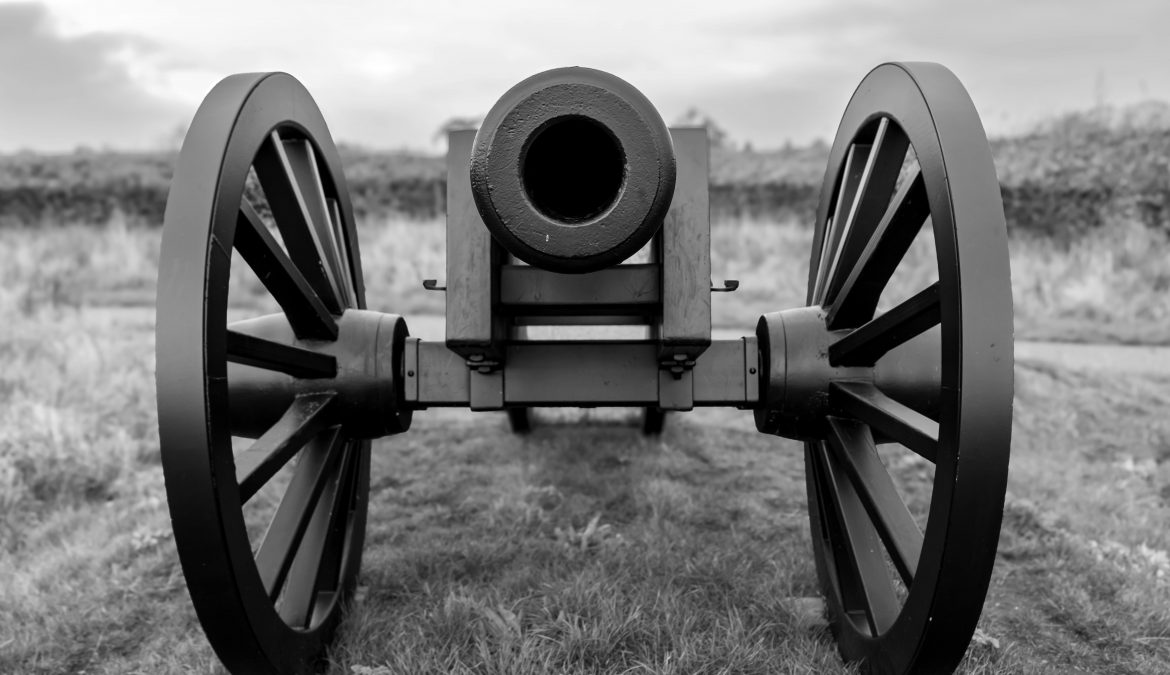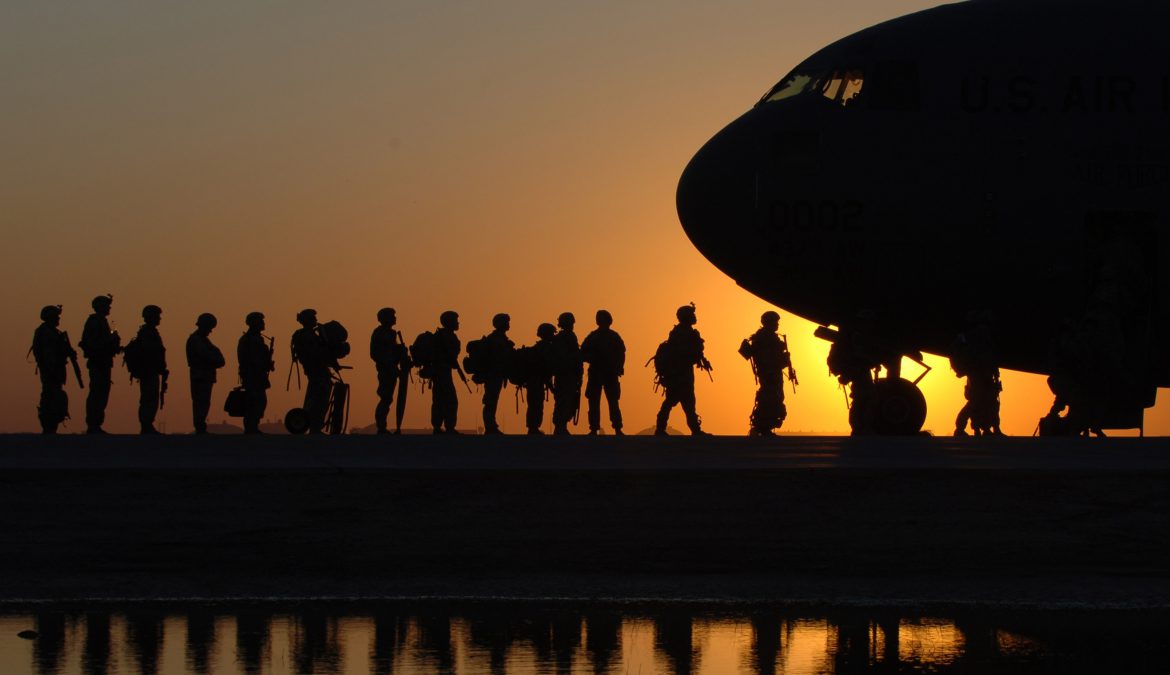Miriam, age 16
Communication is critical in war. Without accurate correspondence, attacks are uncoordinated, retreats are disorganized, and sometimes allies even attack each other, believing that their own army is the enemy. That being said, no communication can sometimes be better than insecure communication. When your enemy can read your messages, they can know your every move, every secret, the identity of any spy you have managed to place, and other vital information. Now, we have improved the security of our communication methods, but in previous wars the main way of sending messages was by radio. Anyone can listen in on messages sent by radio, as long as they have a radio too. That’s where codes enter in. Officially, a code is defined as “a system of words, letters, figures, or other symbols substituted for other words, letters, etc., especially for the purposes of secrecy.” Ideally, codes make your radio broadcasts unintelligible to all but those who have the key to your code. Hopefully, this is only your allies. Unfortunately, the enemy sometimes discovers the key to your code too. When someone else has intercepted the key to your code, they have broken it. The science of making codes is called encryption. The science of breaking codes is called cryptanalysis. There are some incredible stories in history about wartime codes. Many of the most amazing, which existed during WWII, are the German’s Enigma, the Japanese’s PURPLE, and the American’s SIGBA and Code Talkers.
During WWII, Germany’s military messages were encrypted by a machine called Enigma. The Germans were so confident in Enigma’s security, they used it for all their highly secret messages. Their faith was vainly placed. Encrypted Enigma messages were first deciphered by Polish cryptanalysis before their country was invaded. Sadly, Poland was defeated before they could work out a reliable method of breaking the code. When their country was forced to surrender, they passed off all their information and theories to American and British scientists, who carried on the vital task of breaking the German’s code. Once broken, intelligence from decrypted Enigma messages was called Ultra. Enigma was a rotary encryptor machine, which means that several wheels, or rotors, were marked with the letters of the alphabet and spun erratically to randomize the code. Enigma machines on the receiving end would decode the message with a predetermined key. The more wheels, the more secure the code. This rotary method was difficult, but not impossible to break. Enigma’s American counterpart, SIGBA, also a rotary encryptor, had an added layer of security called a reflector, which ensured that American messages remained secure. SIGBA was never cracked during the war. By comparison, Enigma, while still very difficult to break, was relatively weak. For example, Enigma had three rotary wheels, whereas SIGBA had fifteen. The first German Enigma machine was captured from a U-boat. German U-boat wolfpacks in the Atlantic relied heavily on Enigma coded messages to coordinate their positions and attacks on Allied convoys. U-boat commanders called this the First Happy Time. Once the code was broken, convoys became much more effective in avoiding ambushes, and U-boat influence in the Atlantic dropped dramatically. Seeing that enemy ships were suddenly able to evade their attacks, the Germans added more and more rotors to Enigma. While the code remained secure, U-boat successes skyrocketed. This was called the Second Happy Time. However, these added security measures were soon breached, and the wolfpacks never again reached their previous menacing status. Historians believe that Ultra intelligence was essential to the Allied victory. The breaking of encrypted Enigma messages was an important part of WWII.
Japan’s communications encryptor, PURPLE, was similar to Enigma, but even weaker. American cryptanalysts cracked PURPLE even before their entry into the war. Intelligence from PURPLE was known as MAGIC. PURPLE’s function was diplomatic as well as military, and lots of valuable information was gained from the reports back to Japan from the Japanese ambassador in Germany. On December seventh, the day of the attack on Pearl Harbor, the Japanese formally declared war with a statement sent through PURPLE. American cryptologists had intercepted, decoded, and read the message before the Japanese ambassador did. The officials to whom the ambassador delivered the statement had to pretend they were reading it for the first time. Unfortunately, the Japanese ambassador was not forewarned of the Pearl Harbor attack, so neither was America. They gleaned very useful information. Some of the most useful was that deception Operations Mincemeat and Barclay had been successful, and the Germans believed that the Allies would invade mainland Europe through the Balkans, instead of Normandy, on D-Day. Unlike the German’s Enigma, which started the war with three rotors and ended with eight, the Japanese believed their code was unbreakable, so they never increased PURPLE’s security or complexity. They assumed that any information America had was from spies and traitors. The first they heard of their code being broken was from the Allies, after the war had ended. Because of this overconfidence, reading Japanese PURPLE communications became routine for the Allies by the end of the war.
America’s military code system in the Pacific theater was called the Code Talkers. Unlike Japan and Germany’s PURPLE and Enigma, and America’s SIGBA, used in the European theater, the Code Talkers program involved no machinery at all. Like SIGBA, the Code Talkers were never broken, even after the war. It made use of an actual spoken language, the Native American dialect of Navajo. The method was first conceived by Philip Johnston, who was the son of a missionary. He had grown up on the Navajo reservation and spoke their language fluently. Johnston believed that the Navajo language would make an extremely secure code. He was right. Johnston proposed his idea to the military, and, impressed by the trial runs, they gave permission for thirty Code Talkers to be recruited. Three dropped out of the program, making the original number of Code Talkers twenty seven. They were deployed in the Pacific because America’s codes there were being consistently broken, and SIGBA was working well in Europe. They transmitted messages at the battles of Pelelia, Marianas, Solomons, Tarawa, Guadalcanal, Midway, and Iwo Jima. Of their role at Iwo Jima, Major Howard Conner stated, “The entire operation was directed by Navajo code…during the two days that followed the initial landings, I had six Navajo radio nets working around the clock…they sent and received over eight hundred messages without an error. Were it not for the Navajo Code Talkers, the Marines never would have taken Iwo Jima.” After their incredible successes, and proof of their accuracy, effectiveness, and security, permission was given to recruit more Code Talkers. By the end of the war, four hundred twenty one Code Talkers had served in the Pacific. No Code Talkers died during the war, but because of their skin color, they were occasionally mistaken for Japanese spies. Several were almost shot by their own allies. The Code Talkers created an incredibly secure code. The Navajo language is extremely different from any other language, even other Native American tribal languages. The Germans had made a point of studying Amerindian dialects before the war, knowing that such an obscure and exclusively American set of languages might be used against them. However, because Navajo has no relation to other Amerindian languages, etymologically having come from the north, rather than the south, German Amerindian specialists had no insights on this language. It’s syntax is also so different from Indo-European languages, that Japanese and German speakers would have had a hard time understanding even a clearly translated sentence. Conveniently, at the time there was no written alphabet or language for Navajo, making it practically impossible to study or learn. The only feasible way was to learn it vocally, from birth like the Code Talkers. Even so, the Japanese might have been able to overcome these challenges…if they had been able to write it down or transcribe it in any way. But the flowing, chantlike sound of Navajo gives almost no way for an outsider to separate one sound from another. Spoken as quickly as a native speaker would speak it, Navajo would be more like an indistinguishable rush of sounds than a language. Some have related the sound of spoken Navajo to a train rushing along its tracks, or of water gurgling down a partially blocked drain. Also, Navajo is a tonal language. The same sound can mean many different things, depending how it’s spoken. Despite this already high level of security, another layer was added. They used code words for common phrases, and spelled out other messages with substitute words for each letter. For example, “ant” stood for A, “badger” stood for B, and so on. Even to a native Navajo speaker, the Code Talker’s speech would have sounded like a nonsensical recitation of random words. The Code Talkers had another huge advantage over the mechanical encryptions of the day. They were fast. As the Code Talkers had memorized the code phrases and substitute words, there was no encoding and decoding needed. It was all done with the speed of normal conversation. The accuracy was exceptional, because there was no need for a deciphering key. Although SIGBA was never cracked, keys were intercepted, messages were miscoded, and the whole, imperfect process took hours. The Navajo Code talkers were by far the most ingenious and streamlined secure communications method of the war. Here are some examples of their code phrase vocabulary.
Submarine = metal fish = besh-lo
Fighter plane = hummingbird = dah-he-tih-hi
Squad = black street = debeh-li-zire
Dive bomber = chickenhawk/sparrowhawk
Route = rabbit trail
Grenade = potato
United States = Our Mother
England = Bounded By Water
Bombs = eggs
Battleship = whale
Destroyer = shark
Artillery = Many Big Guns
Magnet = pick up iron
Saboteur = troublemaker
The Code Talkers were vital to America’s military efforts in the Pacific theater.
Enigma, PURPLE, SIGBA, and the Code Talkers are only some of the amazing cryptological feats in history. As you might imagine, the making and breaking of codes is a difficult task. There are infinite possible meanings for every sound, symbol, or letter. The codes used in WWII were incredibly difficult to crack with the tools available at that time. With the computers we have now, cracking WWII era codes would have taken about a hundredth of a second. Where people must analyze key possibilities for the code manually, computers run through every option for the key in milliseconds, producing the correct answer much more quickly. But as computer technologies have advanced, so have cryptology techniques. Modern codes, which have many more key possibilities, are much more difficult to break. Unbelievably, it takes too long for even computers to run through and find the right key. Cryptology is an amazing science. It is always developing and growing. We owe much of our knowledge of cryptology to the groundbreaking discoveries in WWII. Even most modern code systems can trace their roots back to the ingenious encryption methods of WWII.
Bibliography
Arbuckle, Alex. “The Navajo Code Talkers That Helped the U.S. WIN WWII.” Mashable, Mashable, 14 Apr. 2022, https://mashable.com/feature/navajo-code-talkers.
“Cryptanalysis of the Enigma.” Wikipedia, Wikimedia Foundation, 22 Oct. 2022, https://en.m.wikipedia.org/wiki/Cryptanalysis_of_the_Enigma#Rejewski’s_characteristics_method.
“Cryptography and Cryptanalysis in World War II: Historical Spotlight: News.” Wargaming, https://wargaming.com/en/news/cryptography_and_cryptanalysis/.
Cryptography, https://derekbruff.org/blogs/fywscrypto/tag/world-war-ii/.
“Developments during World Wars I and II.” Encyclopædia Britannica, Encyclopædia Britannica, Inc., https://www.britannica.com/topic/cryptology/Developments-during-World-Wars-I-and-II
“Enigma Machine.” Wikipedia, Wikimedia Foundation, 14 Nov. 2022, https://en.m.wikipedia.org/wiki/Enigma_machine.
“Gilbert Vernam.” Wikipedia, Wikimedia Foundation, 19 June 2022, https://en.m.wikipedia.org/wiki/Gilbert_Vernam.
History of Cryptography, https://www.codesandciphers.org.uk/heritage/ModSec.htm.
“The Impact of Modern Electronics.” Encyclopædia Britannica, Encyclopædia Britannica, Inc., https://www.britannica.com/topic/cryptology/The-impact-of-modern-electronics.
Isaac Computer Science, https://isaaccomputerscience.org/concepts/data_encrypt_vernam?examBoard=all&stage=all.
“Magic (Cryptography).” Wikipedia, Wikimedia Foundation, 30 Oct. 2022, https://en.m.wikipedia.org/wiki/Magic_(cryptography).
“Marian Rejewski.” Wikipedia, Wikimedia Foundation, 27 Oct. 2022, https://en.m.wikipedia.org/wiki/Marian_Rejewski#:~:text=On%2017%20January%201940%20the,at%20Bletchley%20Park%20in%20England.
NSA Staff Processing Form I – National Security Agency. https://www.nsa.gov/portals/75/documents/news-features/declassified-documents/cia-kryptos-sculpture/doc_2.pdf.
Plessas, Nick. “Https://T.co/X8jcEyR0Og Https://T.co/ms5imz2eu9.” Twitter, Twitter, 22 Sept. 2022, https://twitter.com/NickASAVet/status/1572807878276423685.
“Sigaba.” Wikipedia, Wikimedia Foundation, 1 Sept. 2022, https://en.m.wikipedia.org/wiki/SIGABA.
Silversmith, Shondiin. “Navajo Code Talkers Created an Unbreakable Code. It Helped Win World War II.” The Arizona Republic, Arizona Republic, 8 Aug. 2022, https://www.azcentral.com/story/news/local/arizona/2018/07/11/navajo-code-talker-facts-unbreakable-code/460262002/.
“Type B Cipher Machine.” Wikipedia, Wikimedia Foundation, 19 Aug. 2022, https://en.m.wikipedia.org/wiki/Type_B_Cipher_Machine.
“Ultra.” Encyclopædia Britannica, Encyclopædia Britannica, Inc., https://www.britannica.com/topic/Ultra-Allied-intelligence-project.
“Ultra.” Wikipedia, Wikimedia Foundation, 5 Oct. 2022, https://en.m.wikipedia.org/wiki/Ultra.
“War of Secrets: Cryptology in WWII.” National Museum of the United States Air Force™, https://www.nationalmuseum.af.mil/Visit/Museum-Exhibits/Fact-Sheets/Display/Article/196193/war-of-secrets-cryptology-in-wwii/.
Wendorf, Marcia. “75 Years after VJ Day, the Legacy of the Navajo Code Talkers.” Interesting Engineering, Interesting Engineering, 20 Aug. 2020, https://interestingengineering.com/culture/75-years-after-vj-day-the-legacy-of-the-navajo-code-talkers.
Wilson, William R. “Navajo Code Talkers: How Native Americans Helped WIN WW2.” HistoryNet, HistoryNet, 19 Aug. 2022, https://www.historynet.com/world-war-ii-navajo-code-talkers/?f.
“World War II Cryptography.” Wikipedia, Wikimedia Foundation, 15 Sept. 2022, https://en.m.wikipedia.org/wiki/World_War_II_cryptography.
“WWII Women Cracking the Code.” Homepage, https://airandspace.si.edu/stories/editorial/wwii-women-cracking-code.










